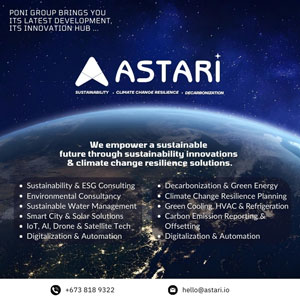SINGAPORE (ANN/THE STRAITS TIMES) – In response to escalating air travel demand in the Asia-Pacific, Singapore established an aviation innovation centre, leveraging technology to overcome airspace and workforce limitations.
Anticipating benefits for Changi Airport with the launch of Terminal 5 in the mid-2030s, the hub aims to fortify infrastructure and manpower for the anticipated surge in traffic.
Led by Mr Patrick Ky, former head of Europe’s civil aviation safety agency, the International Centre for Aviation Innovation, initiated by the Civil Aviation Authority of Singapore (CAAS) on Jan 10, will not only address capacity challenges but also explore methods to curtail the aviation sector’s carbon emissions.
Incorporated in August 2023, the centre operates as a company limited by guarantee, concentrating its efforts on the Asia-Pacific region due to the projected robust growth in air travel demand.
Focusing on four key areas—next-generation air navigation services, automated and smart airports, unmanned aviation systems, and sustainable aviation—the centre aims to facilitate collaborative research and development projects among global governments, industry stakeholders, and research institutes.
This collaborative approach seeks to share risks, pool expertise, and allocate resources effectively, ultimately delivering practical solutions for real-world implementation.
“You can always have a very smart idea, a new technology which works in a lab, but it never gets implemented… because it stays in a research environment,” said Mr Ky at a press conference.
“If you don’t bring in very early in the process the downstream developers or implementers of your innovation, it doesn’t work,” added the Frenchman, who was formerly executive director of the European Union Aviation Safety Agency.
CAAS director-general Han Kok Juan, who chairs the innovation centre’s governing board, said there is technology available, but it is costly and complex to deploy, hence a new model of cooperation is required.
For a start, the centre has secured USD140 million in funding from Singapore’s National Research Foundation (NRF) to work on next-generation air navigation services over a five-year period.
For instance, it is looking to set up a regional experimentation platform that will allow users to share weather data and flight paths.
CAAS said it is looking at similar funding arrangements for the centre’s three other focus areas.
Separately, CAAS and the NRF will provide up to USD30 million in funding to cover the centre’s initial operating expenditures.
Meanwhile, the new centre will seek funding from other partners and regional institutions, such as the Asian Development Bank.
Mr Han said the centre will play a useful role in helping to redesign the systems and processes at Changi Airport in preparation for T5’s opening.
The mega terminal is expected to handle up to 50 million passengers a year – more than the current capacities of Terminals 1 and 3 combined – and the increase in handling capacity on the ground needs to be matched by a commensurate increase in air traffic management capacity in the skies, he said.
“In Singapore, manpower cannot grow correspondingly, so there needs to be very significant productivity savings through job redesign as well as technology adoption,” he added.
Asked whether the Jan 2 accident at Tokyo’s Haneda Airport exposed any safety issues that the aviation industry needs to focus on and improve, Mr Han said Singapore will have to wait for the results of the ongoing investigations before drawing lessons from the collision.
Five of six crew members aboard a Japan Coast Guard plane were killed after it collided with a Japan Airlines Airbus A350 plane while on the runway.
Looking ahead, Mr Han said there will be a recruitment drive in the coming months to grow the centre’s headcount to 20. The staff will come from around the world, and could include secondments from governments and private companies.
The centre is currently housed at an interim office in Paya Lebar, while a permanent space at Changi Airport Terminal 1 undergoes renovation.
Mr Ky will be leading an outreach exercise to get partners on board, a process that will likely take at least a year, and aircraft manufacturers Airbus and Boeing are almost certainly on the list.
Asked whether the added investments will trickle down to passengers in the form of higher ticket prices, Mr Han said airfares have gone up in recent months, but this is due to the capacity constraints that the new aviation innovation centre is working to overcome.
“Therefore, the investment in capacity building is very important for us to be able to keep air travel affordable in the future,” he added.





